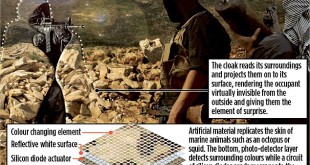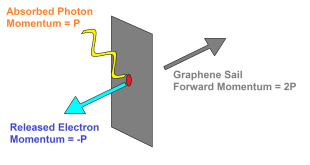Introduction:
In the ever-evolving landscape of scientific research and experimentation, the need for precise control over environmental conditions has become increasingly paramount.
In the realm of scientific exploration, we often venture into the unknown, seeking to unravel the mysteries of extreme environments. From the frigid depths of space to the scorching heat of nuclear reactors, these environments pose unique challenges for our instruments and technologies. Optical cryostats, at the forefront of this demand, have emerged as indispensable tools, providing researchers with the ability to study materials and phenomena in extreme temperature environments.
Among the tools that enable us to peer into these extreme conditions are optical cryostats, versatile instruments that provide a controlled, ultra-cold environment for optical components. This article delves into the fascinating realm of optical cryostats, shedding light on their diverse designs and unparalleled performance characteristics.
Understanding Optical Cryostats:
Optical cryostats are specialized refrigeration systems designed to maintain optical components at extremely low temperatures, typically ranging from -150°C to -273.15°C, the absolute zero of temperature. These low temperatures are crucial for a variety of scientific applications, as they can suppress unwanted noise, enhance sensitivity, and enable the study of materials that exhibit unique properties at cryogenic temperatures.
Principle of Operation
Optical cryostats typically employ a combination of cooling techniques, such as cryogenic fluids, mechanical cryocoolers, and dilution refrigerators, to achieve the desired ultra-low temperatures. These cooling methods work by removing heat from the optical components, gradually reducing their temperature to the desired cryogenic range.
Design and Performance Characteristics:
Cryogenic Technologies:
In the realm of optical cryostats, the choice of cryogenic technology is pivotal in determining the temperature range and efficiency of the system. Liquid Nitrogen (LN2) serves as a common option, enabling researchers to attain temperatures as low as 77 Kelvin. This method, widely adopted for its cost-effectiveness, caters to a spectrum of applications, particularly those where moderately low temperatures are sufficient.
On the other end of the temperature spectrum, liquid helium is employed, allowing optical cryostats to reach temperatures close to absolute zero at 2.3 Kelvin. This capability is essential for investigations into superconductivity and other phenomena that demand ultra-low temperatures.
Notably, the introduction of Cryofree™ Technology marks a significant advancement, eliminating the reliance on traditional cryogens. This environmentally friendly and maintenance-free approach enhances overall convenience and operational efficiency, representing a cutting-edge solution in cryogenic technology.
Sample Environments:
The configuration of the sample environment within optical cryostats plays a crucial role in the precision and efficacy of experiments. Opting for a sample in a vacuum environment is a strategic choice that minimizes thermal conduction and radiation. This configuration is particularly suited for experiments requiring isolation from external influences, providing researchers with a controlled and stable setting. Another innovative approach involves the use of exchange gas systems, where researchers introduce a specific gas to achieve rapid thermalization and maintain a consistent temperature across the sample. This proves especially advantageous for dynamic experiments, where quick temperature changes are imperative for accurate observations and analyses.
Versatility in Applications:
The versatility of optical cryostats extends across a diverse array of scientific disciplines, contributing significantly to advancements in research and technology. In materials science, these cryostats are instrumental in exploring the properties of materials at low temperatures, offering insights into their structural and electronic characteristics. Cryogenic temperatures can significantly alter the properties of materials, revealing new insights into their behavior and potential applications.
In physics, optical cryostats play a crucial role in the study of quantum phenomena, superconductivity, and magnetism, providing researchers with the controlled environments needed for precise experimentation.
The field of chemistry benefits from cryogenic environments as well, leveraging optical cryostats to investigate reaction kinetics and molecular interactions.
Spectroscopy and Microscopy: Optical cryostats are essential for low-temperature spectroscopy and microscopy techniques, such as Fourier transform infrared (FTIR) spectroscopy and Raman spectroscopy. These techniques provide detailed information about the molecular structure and composition of materials at cryogenic temperatures.
Astronomy and Astrophysics: Detecting faint astronomical signals requires extremely sensitive detectors, often cooled to cryogenic temperatures to minimize noise. Optical cryostats are crucial for ground-based astronomy and space-based telescopes, enabling the observation of distant galaxies, planets, and cosmic phenomena.
Quantum Technologies: Quantum mechanics exhibits fascinating phenomena at cryogenic temperatures, leading to the development of quantum technologies such as quantum computers and quantum sensors. Quantum computers are sensitive to heat. Even a small amount of heat can cause the quantum bits, or qubits, to lose their quantum state. This is why quantum computers need to be kept at extremely cold temperatures, typically below -273 degrees Celsius (absolute zero). Optical cryostats provide the ultra-low temperatures necessary for these technologies to operate effectively.
This adaptability across scientific domains underscores the broad impact of optical cryostats, positioning them as indispensable tools for researchers seeking to unravel the mysteries of extreme temperature environments and push the boundaries of scientific knowledge.
Advantages of Optical Cryostats:
- Precision and Control: Optical cryostats offer precise temperature control, enabling researchers to tailor experimental conditions to their specific requirements.
- Versatile Configurations: With options for different cryogenic technologies and sample environments, optical cryostats can be customized to accommodate a wide range of research needs.
- Innovation in Cryogen-Free Technology: Cryofree™ technology represents a leap forward, eliminating the logistical challenges associated with traditional cryogens and enhancing overall system reliability.
Recent Advancements
Optical cryostats are continuously evolving, with researchers developing innovative techniques and materials to enhance their performance and expand their applications. Here are some of the latest breakthroughs in optical cryostats:
-
Improved Cooling Efficiency: Researchers are developing more efficient cooling methods, such as advanced cryogenic fluids and optimized heat transfer mechanisms, to achieve lower temperatures and reduce energy consumption.
-
Enhanced Temperature Stability: Advanced temperature control systems are being implemented to maintain ultra-precise temperature stability, crucial for sensitive experiments and measurements.
-
Compact and Lightweight Designs: Miniaturization efforts are leading to smaller, lighter cryostats, making them more portable and adaptable to various experimental setups.
-
Integration with Optical Systems: Cryostats are being seamlessly integrated with optical systems, enabling direct coupling of light sources, detectors, and optical components within the cryogenic environment.
-
Development of Active Cryostats: Active cryostats are being developed to dynamically adjust cooling and temperature control based on real-time feedback, optimizing performance for specific experimental requirements.
-
Exploration of Novel Cooling Techniques: Researchers are investigating alternative cooling methods, such as magnetic refrigeration and optical cooling, to achieve even lower temperatures and explore new frontiers in cryogenic research.
-
Utilization of Advanced Materials: New materials with improved thermal conductivity, mechanical strength, and radiation shielding properties are being incorporated into cryostat designs to enhance their performance and durability.
-
Remote Operation and Monitoring: Cryostat systems are being equipped with advanced control and monitoring capabilities, enabling remote operation and real-time data acquisition from distant experimental setups.
-
Development of Cryogen-Free Cryostats: Researchers are exploring cryogen-free cryostat designs that eliminate the need for handling and storing cryogenic fluids, enhancing safety and convenience.
-
Customization for Specific Applications: Cryostat designs are becoming increasingly tailored to specific applications, such as space-based instruments, high-field magnets, and cryogenic detectors, optimizing their performance for unique experimental requirements.
These advancements demonstrate the continuous progress in optical cryostat technology and its expanding role in scientific research. As innovation persists, optical cryostats will continue to empower scientists to unlock the secrets of extreme environments and push the boundaries of knowledge.
Future Directions
As scientific research continues to push the boundaries of knowledge, the demand for advanced optical cryostats is increasing. Researchers are actively exploring new materials, cooling methods, and design innovations to develop next-generation cryostats that can achieve even lower temperatures, maintain greater stability, and operate in more challenging environments.
Conclusion:
In the pursuit of scientific discovery, optical cryostats stand as indispensable tools, providing researchers with the means to explore the mysteries of extreme temperature environments. From the innovation of cryofree™ technology to the versatility in sample configurations, these cryostats empower scientists across disciplines to push the boundaries of knowledge and unlock the secrets hidden within the frigid realms of cryogenic research.
Their versatility extends across a wide spectrum of disciplines, from materials science to astronomy, providing invaluable insights into the fundamental nature of matter and the vastness of the universe. As technology continues to advance, optical cryostats will undoubtedly remain pivotal instruments in the arsenal of scientists seeking to unravel the complexities of our world.
 International Defense Security & Technology Your trusted Source for News, Research and Analysis
International Defense Security & Technology Your trusted Source for News, Research and Analysis

